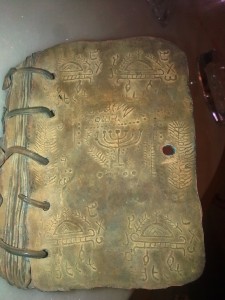
So, there’s been a new development concerning the Lead Codices where the Jordinian Government apparently has seized several of them.
In the article that announced this, the Jordinian Department of Antiquities Director Ziad Saad, is quoted saying,
“There has been a debate all over the net – some think they are fakes, some think they are very genuine – but we have yet to have a definitive conclusion based on a scientific approach.”
Overall, Saad’s words surprise me. There really hasn’t been anyone who thinks they are “very genuine.” The consensus among scholars and expert bloggers has been that they’re fakes from the very beginning.
Jim Davila has already voiced his opinions about this latest development as well as a lengthy list of the evidences against it. Looking over everything, Saad’s declaration of this consensus as “premature” is (in my opinion) refusing to call a spade a spade. The only shred of hope, at this point, for anything truly genuine is to investigate the pieces that haven’t been photographed yet.
So here’s where I’d like to share a funny thing I’ve been mulling over. I’ve come across a couple of characters on one of the plates which are certainly not Aramaic or Hebrew.

The only thing that it seems it could match would be Coptic, and if parts of this are in Coptic it would suggest that the initial claims by Elkington about their source were true (i.e. that they came from Egypt, and not Jordan).
Which would make the Jordinian Government seizing them look very, very silly.
However, since Coptic is a bit beyond my expertise, I’d love to hear some more learned opinions on this matter. 🙂
Peace,
-Steve
UPDATE May 2nd: I, showing how much I actually know about Coptic, didn’t get the dates right. 🙂
UPDATE May 2nd #2: I’ve contacted a few Coptic scholars about this and I’m waiting to hear back.





